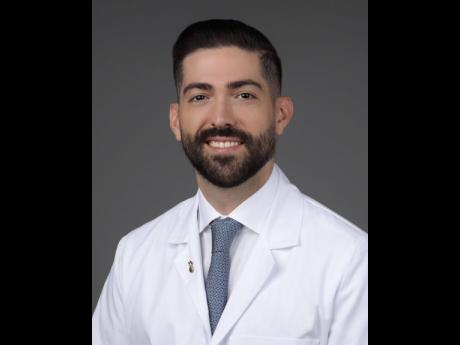Understanding epilepsy and its causes
EPILEPSY IS a disorder of the brain characterised by repeated seizures. A seizure is usually defined as a sudden alteration of behaviour due to a temporary change in the electrical functioning of the brain.
Normally, the brain continuously generates tiny electrical impulses in an orderly pattern. These impulses travel along neurons, the network of nerve cells in the brain and throughout the whole body through chemical messengers called neurotransmitters.
In epilepsy, the brain’s electrical rhythms have a tendency to become imbalanced, resulting in recurrent seizures. In patients with seizures, the normal electrical pattern is disrupted by sudden and synchronised bursts of electrical energy that may briefly affect their consciousness, movements or sensations.
Epilepsy is usually diagnosed after a person has had at least two seizures that were not caused by some known medical condition, such as alcohol withdrawal or extremely low blood sugar.
Once diagnosed, treatment is vital for improving quality of life and preventing disability from repeated seizures. The good news is, advanced technologies and diverse treatment options, from medication to surgery and brain stimulation, allow patients to live fully and actively by reducing or stopping seizures.
State-of-the-art care involves highly customised strategies tailored to the specific seizure cause. Key technological advances include tiny electrodes and lasers, MRI imaging during surgery, and implantable devices that halt seizures, dramatically enhancing quality of life and participation in daily activities.
According to Dr Luis Tornes, director of epilepsy at Miami Neuroscience Institute, the most profound progress has been in understanding the nuances of an individual’s specific type of epilepsy. By accurately identifying both the origin of seizures and their underlying cause, he said, they are better equipped to develop highly personalised treatment plans for patients.
“This precision allows for a broader range of therapeutic interventions, including more effective medications and surgical options, when appropriate,” Dr Tornes said.
Advancements in imaging technology, he said, are enabling healthcare professionals to identify the origins of seizures with unparalleled accuracy. “Of particular note is stereo electroencephalography (SEEG), a minimally invasive surgical procedure used to identify deep areas in the brain where difficult-to-treat epileptic seizures begin,” Dr Tornes said.
“SEEG electrodes can be implanted to gather data directly from specific brain regions, providing valuable insights that were previously difficult to obtain. This more comprehensive approach to diagnosis results in more targeted interventions, increasing the likelihood of successful treatment outcomes,” he added.
About half of the people who have one seizure without a clear cause will have another one, usually within six months. A person is twice as likely to have another seizure if there is a known brain injury or other type of brain abnormality.
If the patients does have two seizures, there is about an 80 per cent chance of having more. If the first seizure occurred at the time of an injury or infection in the brain, it is more likely the patient will develop epilepsy than if the seizure did not happen at the time of injury or infection.
According to the Epilepsy Foundation, epilepsy affects three million people in the United States and 50 million worldwide. Epileptic seizures may be tied to brain injury or genetics, but for 70 per cent of epilepsy patients, the cause is unknown. The Epilepsy Therapy Project notes that 10 per cent of people will have seizures in their lifetime.
In addition, epilepsy impacts over six million people in Latin America and the Caribbean, exceeding cases of Parkinson’s, multiple sclerosis, cerebral palsy, and autism combined.
Epilepsy affects more than 300,000 children under the age of 15, and more than 90,000 young people in this group have seizures that cannot be adequately treated. The onset rate starts to increase when individuals age, particularly as they develop strokes, brain tumours or Alzheimer’s disease, all of which may cause epilepsy. Reports indicate that more than 570,000 adults over the age of 65 suffer from the disorder.
More men than women have epilepsy. Children and adolescents are more likely to have epilepsy of unknown or genetic origin. Brain injury or infection can cause epilepsy at any age. The Epilepsy Foundation also reports that 70 per cent of children and adults with newly diagnosed epilepsy can be expected to enter remission after having gone five years or more without a seizure while on medication.
In addition, 75 per cent of people who are seizure-free on medication can be weaned from medication eventually. According to the National Institute of Neurological Disorders and Stroke, 20 per cent of epilepsy patients have intractable seizures, seizures that do not respond to treatment.
Choosing the right treatment, Dr Tornes said, is a detailed process that involves a series of advanced tests. Patients usually undergo prolonged video EEG monitoring, which records brain activity to understand the origin and location of the seizures.
“Various types of brain scans, like MRI, PET scans and functional MRIs are also used to get a clearer picture of what’s going on inside the brain. Neuropsychology tests assess how the brain’s condition is affecting mental skills. While these are the standard tests, additional ones may be carried out if needed. Once all the necessary information is gathered, doctors can then determine which treatment option will be most effective,” Dr Tornes said.
SOURCE: American Association of Neurological Surgeons
The following factors may increase the risk of seizures in people predisposed to seizures:
• Stress
• Sleep deprivation or fatigue
• Insufficient food intake
• Alcohol use or drug abuse
• Failure to take prescribed anticonvulsant medications.



